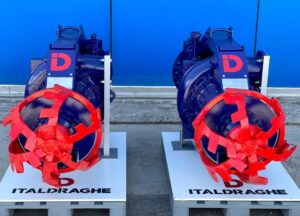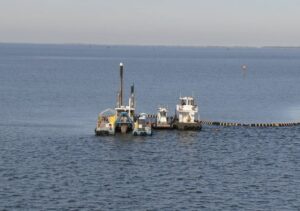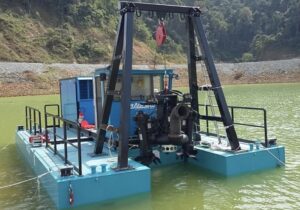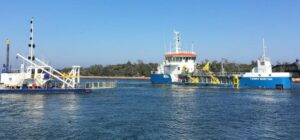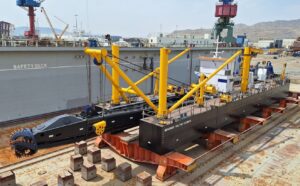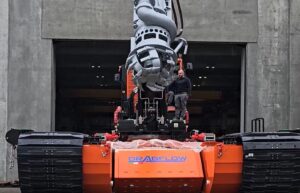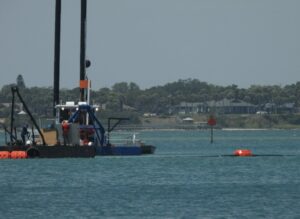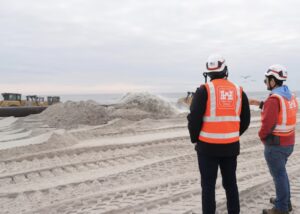A&M University Conducts Dredge Experiments
Dr. Robert Randall, W. H. Bauer Professor in Dredging Engineering in the Department of Ocean Engineering at Texas A&M University, recently conducted laboratory experiments using a model dredge at the Haynes Coastal Engineering Laboratory.
Three graduate students, Joe Girani, Josh Lewis and Paulo de Oliveira, Jr., and Haynes Laboratory staff members John Reed and Kirk Martin assisted Randall in this research to study the effectiveness of a steel screen attached to the suction entrance of the model cutter dredge to keep debris from entering the dredge pump system.
“If a pencil is caught in a vacuum cleaner, it will break up and possibly jam the machine,” said Randall. “Similarly, the cutter at the suction inlet of a dredge is meant to excavate sand. Debris such as unexploded ordnances can get caught inside the suction pipe or pump and could explode.”
Randall and his colleagues experimented with various sizes and shapes of screen openings by creating a model dredging operation. Randall’s model dredge was designed for up to a 1:10 scale model of a real dredge. The model dredge has a four inch suction pipe and three inch discharge pipe, and the cutter is 13 inches in diameter at the back ring.
They used different parameters such as cutter head rotational speed, ladder arm swing speed, pump flow rate, screen opening area ratio and screen opening shape to measure energy loss coefficients, pressure and production efficiency. This established the expected production rate and projected the time to complete dredging with the screen opening.
For a given area of the screen, they found that an opening of around 60 percent worked well. It kept the debris and ordnance out and allowed the sand to get through.
According to Randall, a screen with an optimum shape and size would not only maximize production but also protect the people onboard the dredge.
In a previous project at the laboratory, ropes were put in the sand and the area was dredged to see when the screen would plug up. Testing was conducted with a screen on the suction inlet to keep the ropes, which were simulating tree roots, from entering the suction inlet. Ropes clogged the screen and eventually choked off the pump.
Randall and the students measured the pressure drop between the inlet to the suction pump and the screen in front of the suction inlet of the pump as rope clogged the inlet.

